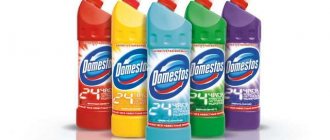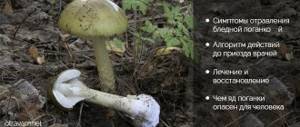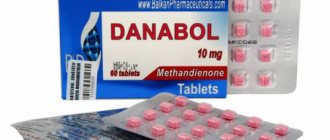A substance such as soda is found in every home in the arsenal of any housewife. Without baking soda, it is impossible to bake soft bread or fluffy buns, and caustic soda will help deal with severe blockages. The soda ash variety is famous for its cleaning abilities.
However, it is necessary to understand that any of these chemical compounds, if used incorrectly, can cause irreparable harm to health or pose a threat to life. You need to be especially careful if there are children in the house.
What is caustic soda used for?
Caustic soda is used in various industries. Areas of application:
- chemical production. Caustic sodium is used in the titration of aluminum, neutralization of acids, for the production of detergents and oils, as a reaction catalyst;
- pulp and paper industry. It is an important substance in the production of paper, cardboard, and wood fiber boards;
- food production. Included in various drinks (E 524), ice cream, chocolate, and also used for cleaning food equipment;
- automobile production. Used in the manufacture of alkaline batteries;
- light industry. Used for bleaching cotton and linen fabrics, in the production of silk;
- biofuel production.
Industrial boilers and pipes contaminated up to 30% require treatment with sodium hydroxide. For this purpose, the pipes are purged with the substance for 18 hours or more. The temperature during the processing period should be up to 155 degrees. The use of NaOH provides a high level of purification.
In everyday life, caustic soda is used for:
- cleaning dishes from carbon deposits, scale and residual fatty deposits;
- cleaning drains and pipelines.
The unique substance has found its application in medical practice.
Consequences
In case of poisoning with baking soda or soda ash, as a rule, there will be no serious consequences for the patient.
At the same time, caustic poisoning can lead to perforation of the stomach and esophagus, which leads to peritonitis, intoxication, damage to the lungs, pleura and massive bleeding. Even if this does not happen, connective tissue adhesions may form as a result of a burn to the esophageal mucosa, the treatment of which will require surgical intervention.
Timely first aid significantly improves the prognosis for the life and health of the patient.
Have you ever had soda poisoning?
Useful properties of caustic soda
Caustic soda has unique properties, due to which it is widely used both in industrial areas, in medicine, and in everyday life.
The substance is hygroscopic, easily dissolves in water, releasing heat. Alkali is easily transported in any state of aggregation.
Caustic soda has certain properties:
- Absolutely insoluble in acetone and ethers;
- Shows high solubility in alcohol solutions of glycerin, ethanol and methanol;
- The melting point of sodium hydroxide is 1390 degrees, sodium hydroxide is a non-flammable substance;
- It comes to a boiling state at a temperature of 1390 degrees;
- A sharp and violent reaction is observed when alkali comes into contact with the metals Al, Pb, Zn and Sn;
- Capable of forming explosive, flammable gas;
- If sodium hydroxide comes into contact with ammonia, a dangerous fire may occur;
- In molten form it destroys glass and porcelain.
The substance has a number of positive properties:
- Completely destroys fat and organic deposits;
- Easily smooths out any unevenness in pipelines, preventing deposits;
- The effect continues even after flushing the drain;
- Using lye once a month is enough to prevent problems with sewer pipes;
- It has a low price and is easy to purchase;
- Caustic is used for disinfection.
You should:
- When processing pipes or the selected surface, wear rubber gloves;
- Wear special goggles that fit close to the face and a mask to prevent the substance from getting into the eyes, nose or mouth;
- When working with caustic soda, you need to open the window;
- If it gets into your eyes, nose or mouth, rinse your face (hands, eyes) with water and then consult a doctor.
Sodium hydroxide should be stored in a closed container out of reach of children.
Symptoms of poisoning
As mentioned above, when consuming a large amount of baking soda, a person develops metabolic alkalosis, so all further clinical manifestations of poisoning will be associated with it:
- change in skin color to pale gray;
- hypoesthesia;
- anxiety, irritability;
- headaches, spatial disorientation, decreased cognitive function;
- loss of appetite;
- feeling of thirst;
- hypotension and increased heart rate;
- bradypnea;
- decreased motor activity.
If caustic soda gets ingested, the symptoms will be more severe:
- Burns of the oral mucosa and esophagus. The stomach rarely suffers from poisoning, since soda reacts with hydrochloric acid and is neutralized.
- Complications from burns often develop in the form of perforation of the esophageal wall. When caustic soda enters the mediastinal space, extensive damage to the pleura and lungs occurs, which leads to massive blood loss.
- When caustic is absorbed into the bloodstream, all organs and systems suffer. The most dangerous is a disruption of the heart, accompanied by a sharp decrease in pressure.
- The kidneys suffer greatly. Acute renal failure may develop.
- Rarely, perforation of the stomach is possible with the leakage of its contents into the abdominal cavity and the development of peritonitis.
Under no circumstances should you rinse your stomach yourself if you are poisoned with caustic soda. Only healthcare workers should do this.
Caustic vapor poisoning is also possible. Upon contact with the eyes, victims experience severe pain and blurred vision. Inhalation of vapors leads to reflex cough, loss of voice, sore throat and pneumonia.
If soda ash gets into the digestive tract, irritation of the pharyngeal mucosa, nausea, vomiting and pain in the epigastric region are noted.
Use in everyday life at home
In everyday life, caustic soda is widely used due to its properties, low cost and ease of use. It is successfully used to clean kitchen utensils from carbon deposits, grease stains and scale, helps get rid of stubborn marks on tiles, and can be used to clean ovens and gas stoves.
The substance is also used for cleaning sewer drains. Due to its ability to corrode everything organic, caustic soda easily removes various deposits from the surface of pipes. Soda is also used to clean pipelines.
When cleaning kitchen utensils from grease, please note that caustic reacts with aluminum and Teflon, and the use of the substance on such utensils is not permitted.
To clean kitchen utensils you need to prepare a solution of:
- 200 g soda;
- 10 liters of water;
- one piece of laundry soap in crumbled condition;
- 150 ml silicate glue.
The resulting mass is mixed well and poured into a container, always metal or coated with strong enamel. Dirty dishes are placed here. Place the container on the fire and keep it on low heat for 2 hours. Afterwards, the dishes are removed from the alkali solution and washed with running water. It is enough to boil glassware for 10 minutes.
For removing stubborn grease (fuel oil) stains from clothes.
To remove such stains, items are soaked in a 2% caustic solution, which is obtained by dissolving 1 tbsp in 1 liter of water. l. NaOH. Clothes are soaked in the solution for 2 hours. It is not recommended to apply this method to natural fibers, since they can dissolve under the influence of aggressive alkali.
Use in agriculture.
Gardeners use it to treat fruit trees (30 g of soda per 10 l) of water. Excellent results are recorded after using the disinfectant.
For cleaning pipes.
NaOH helps to quickly get rid of clogged pipes. It is important to maintain certain proportions, dilute well and flush the sewer.
— A solution for washing pipes is prepared from 2 kg of alkali and 4 liters of water. Pour into the pipes and leave for 60 minutes, then rinse the drain with boiling water.
— To clean the sink, pour 150 g of soda into the neck and pour boiling water over it. After an hour, the pipes need to be rinsed thoroughly.
— 20 g of vinegar is poured into the pipe and caustic soda is poured on top. After some time, a violent reaction occurs with the release of abundant foam. The drain is closed with a stopper for 2 hours, then poured with boiling water. The method helps remove deposits from the surface of pipes.
This substance will not damage metal pipes like acid.
For the purpose of obtaining homemade soap.
In non-factory conditions, you can prepare soap from caustic soda, pure water, certain types of oil, and essential oils. For good results, adhere to special ratios. Soda is diluted in water, oil is heated in a water bath and poured into an alkaline solution. The resulting sticky mixture is aromatized with essential oils and spread into molds. It is recommended to use homemade soap, prepared with your own hands, every other day.
All washing powders contain caustic soda. It can also be used separately during washing. Add 4 tablespoons of soda to the drum of the washing machine (water temperature should be about 100 degrees). Caustic can also be used for hand washing (3 tablespoons of caustic per 10 liters of water). The laundry is soaked in the resulting alkaline solution for 2 hours and then washed.
Where not to use
There are materials for which contact with soda ash is strictly contraindicated. For example, paint may come off after such treatment. Also, do not wash suspended ceilings with alkali. Four more surfaces that don’t “like” laundry soda.
- Delicate materials. Sodium carbonate is harmful to silk, wool, leather, impregnated fabrics, membrane surfaces, leatherette and suede.
- Aluminum, cast iron and plastic. Aluminum and cast iron have already been discussed above. Also, do not use the product for general cleaning of the refrigerator. When exposed to strong alkali, plastic can deteriorate.
- Wood, varnish. Sodium carbonate is harmful to the surfaces of wooden and lacquered furniture: the polish may be damaged.
- Fiberglass. Bricks and tiles made from fiberglass also do not like soda ash.
It is difficult to guess how recently invented modern materials may behave after contact with alkali. For example, linoleum can be processed, but laminate is deformed. It is better not to experiment and avoid contact with plastic and rubber products, PVC windows, bathtubs with acrylic coating, shower doors made of triplex, and leatherette upholstery.
Proportions
It is important to maintain proportions to ensure the best effect from the use of caustic.
— When boiling cast iron and steel, from 50 g to 100 g of soda per liter of water is used to remove tar deposits.
— To clean the drain – 2-4 kg per 7 liters of water (the amount of soda depends on the degree of contamination);
— For soaking clothes during hand washing – 3 tbsp. for 10 liters of water;
— When machine washing, add 3 tbsp to the drum. l. sodium hydroxide. If the water is hard or things are too dirty, 5 tbsp is recommended. l. substances. The temperature should be between 50 and 100 degrees.
— For boiling, use together with the “Whiteness” product. 0.5 kg of caustic soda and 500 ml of product are added to one bucket of water;
— For allergy sufferers, it is useful to wash using caustic soda instead of powder. For 10 liters of water, use 250 g of soda and 250 g of soap shavings. For bleaching, add 2 tbsp to the specified solution. l. ammonia and hydrogen peroxide;
— From caustic soda you can get homemade washing gel according to the following recipe: soap shavings (laundry) 15 g, 3 liters of water, 150 g of soda and 150 g of sodium tetraborate;
— To soften water, dissolve 20 g of soda in 10 liters of water;
— Instead of GALGON, 40 g of NaOH is added to the washing machine tank;
— To clean carbon deposits, dissolve 30 g of soda and 2 bottles of silicate glue in 5 liters of water;
_ To wash dishes, use an aqueous solution of soda (20 g per 1 l);
_ To clean the oven or gas stove, prepare a solution using 20 g of caustic soda, 1 tbsp. l. silicate glue, 0.5 tbsp. l. laundry detergent and 200 ml of water;
_ To clean plumbing fixtures or tiles, you need 20 g of caustic and baking soda and 200 ml of bleach;
_ To remove blockages, use 0.5 cups of soda per 3 liters of water;
_ To obtain a disinfectant solution, you need to take 20 g per 10 liters of hot water;
Types of sodium compounds
All three types of soda are actively used both in industry and in everyday life.
Soda Ash
This compound is called sodium carbonate in chemistry. This chemical is obtained through calcination, which is why it is called calcined. In appearance, it is a whitish powder or a finely granulated mixture. The compound has a high water absorption rate, so it is recommended to store it in a tightly closed package or container.
Soda ash is used at home as a remedy for:
- washing dishes;
- cleaning surfaces in the kitchen and bathroom;
- washing;
- washing floors;
- removing limescale;
- removing blockages;
- water softening.
Application for drain cleaning
For a private sewer system, 3 kg of caustic soda is used per seven liters of water. First, soda is diluted in 7 liters of water in a container with a capacity of 10 liters. The water should be cold, the bucket should be a construction one. When the chemical reaction begins, the solution heats up noticeably. If cold water is used, the solution will warm up by a maximum of 70 degrees. You need to stir the solution with a plastic shovel. After the chemical reaction is complete, the solution can be used.
In a private house, pipe cleaning is carried out according to a certain scheme:
- Half of the solution is poured into the sewer gap, avoiding splashing of the solution, so as not to spoil the decorative coatings in the bathroom. The solution should be left for 3 hours and the bathroom and sink should not be used during this time.
- After 3 hours, you need to pour the remaining half of the solution into the sewer hole and wait 3 hours;
- After the specified time has elapsed, the pipes should be rinsed with plain water, including high water pressure for 15 minutes. Flushing helps avoid rapid wear of pipes.
Cleaning the sewer system of an apartment building is carried out as follows.
The resulting solution is completely poured into the sewer and left for 3 hours. After the time has elapsed, the pipes are washed with plenty of water. If the blockage is severe, it is recommended to repeat the procedure after 15 days.
You can also clean the drain with dry caustic soda. The result is no worse than after cleaning using a solution. The process is carried out in stages:
3 liters of boiling water is poured into the pipeline, then caustic in the form of powder or granules (20 g) is poured into the hole. Then pour in 200 ml of plain water and leave for 3 hours. After time has passed, the pipes are washed with water.
You can also clean dirty pipes using gel-like caustic soda.
Shake 1 glass of gels well in the package and insert it into the sewer slot. Then hot water is poured into the hole and left for 2 hours. After a certain time, the pipes are washed with cold water. The method is less effective, but safer.
Cleaning sewerage from plastic pipes
To clean plastic pipes, it is recommended to use a solution of caustic soda and vinegar.
- 35 g of caustic soda is poured into the pipeline, vinegar is poured on top and the drain is closed with a stopper.
- The drain should be flushed with maximum water pressure, covering the free space with a rag.
The plastic drain can be cleaned by disassembling it. A cleaning cable is inserted into the pipe and lowered inside with rotational movements. The clogs are wound around the hose, and the remaining debris is washed off with water.
Emergency actions
The phenomenon of alkali poisoning in medicine is diagnosed as T54.3 (according to ICD-10). A system of special life-saving measures has been developed for him.
In case of poisoning with acids and alkalis, emergency assistance is provided immediately. This will help reduce the formation of negative influence.
Rescue actions are carried out before the arrival of doctors to alleviate the condition. Treatment tactics are determined by the cause of poisoning. If possible, the victim must show the substance that entered the body. If this is not possible, a quick inspection of the area where the victim was found will be required.
Poisoning caused by household alkali concentrate must be responded to immediately. Carry out the necessary set of procedures to provide first aid:
- The damaged mouth and throat must be rinsed. The rinse liquid is chosen carefully. A light vinegar solution or water with lemon juice will do. Through this action, the severity of thermal damage is reduced.
- Gastric lavage. At least 10 liters of lukewarm water are used. You can use a one percent solution of acetic acid. A mixture of water and citric acid is suitable. The best way to introduce liquid is to use a probe, the tip of which is lubricated with vegetable oil, and, if possible, petroleum jelly. Cleansing the stomach will be effective if done within the first four hours after the incident. Later application of the procedure is ineffective; the alkali affects other organs.
- In some cases, it is impossible to rinse the stomach, then they resort to special types of drinks. Milk and decoctions with a mucous consistency are suitable for this purpose. For example, a decoction of flax or oatmeal. Starch diluted with warm water will do.
- When the respiratory system is damaged, breathing difficulties occur. To alleviate this symptom, the victim is inhaled with a warm solution of novocaine. If inhalation is not possible, apply a warm compress with the same solution to the throat.
- Alkali entering the body causes an instant painful shock. The victim needs to be anesthetized urgently. The medical team uses narcotic drugs. But before the ambulance arrives, analgesics in the form of injections or other invasive drugs are used. A heating pad with ice placed in the area of the stomach will help slow down the spread of poison in the body and relieve pain.
- When a person faints, they lay him down on his side. This measure is necessary to avoid asphyxia from vomit.
The emergency team is called in advance, before taking independent rescue measures. The victim needs a specialized approach to treatment, the person needs medical supervision. Cardiac arrest and absence of pulse are accompanied by indirect massage of the heart muscle and artificial respiration.
For cleaning the cesspool
Treating a cesspool with caustic soda is a very effective process. Before cleaning, it is necessary to make the pit completely sealed in order to avoid the appearance of insects that carry pathogenic particles beyond the influence of the caustic. You should only use an aqueous solution of caustic soda; you should work in special glasses and rubber gloves. Pour 3 kg of soda into a 10-liter bucket and add 7 liters of water. Mix thoroughly with a plastic shovel. During the chemical reaction, heat is released, the temperature of the solution reaches up to 60 degrees.
Gastric lavage
Washing the stomach with soda in case of poisoning has a detoxifying effect. This procedure is included in the algorithm for providing first aid to a poisoned victim.
Recipe for preparing a solution for gastric lavage in case of poisoning:
- 2 teaspoons of lye;
- 1 liter of boiled water at room temperature.
To lavage the child’s stomach, it is necessary to prepare a weak alkali solution:
- A teaspoon of sodium bicarbonate;
- A liter of boiled and chilled water.
More often, washing is carried out using the restaurant (probeless) method. To do this, you need to give a soda solution to drink. Then you should induce vomiting by irritating the root of the tongue. Washing is carried out to clean wash water.
Application in agriculture
Caustic soda is used to treat trees and control pests, in particular:
- powdery mildew;
- gray rotten;
- viburnum leaf beetle;
- cabbage caterpillars;
- aphids.
Caustic soda is used in gardens to destroy weeds. Caustic solution can be used to treat and disinfect garden tools.
Caustic soda is more effective when used during the ripening period of grapes. The substance helps to increase the sweetness of fruits and reduce the risk of bushes becoming infected with gray rot. Prevention against pests is carried out by spraying the aboveground part of the bushes with a solution of 80 g of soda and 10 liters of water. This solution is also used to treat the garden; it helps prevent yellowing of the leaves of cucumbers, gooseberries and currants.
Alkali is also used to disinfect the hive and disinfect the soil in the apiary during an outbreak of diseases.
Prohibited list of actions
Acute poisoning is regarded as a condition with increased danger. If taken incorrectly, the body may regress. An unconditional ban is imposed on the following possible actions:
- Intentionally inducing vomiting. An attempt to remove alkali from the stomach contributes to a secondary burn of the esophagus and oral mucosa, which causes perforation and heavy bleeding. The concentrated liquid thins the walls of the internal organs, and the increase in pressure during vomiting leads to hemorrhage.
- It is forbidden to give the victim drugs with a laxative effect.
- It is believed that the effect of alkali is quenched by soda. This does not apply to poisoning. Do not rinse the stomach using soda solution.
- When there is a suspicion that the walls of the stomach have been corroded by poison, the rinsing procedure should not be performed and the victim should not be given anything to drink. Perforation is manifested by a sharp cutting pain in the area behind the sternum and, accordingly, in the stomach. The condition is recognized by the onset of shock, pale skin, rapid heart rate, and cold sweat.











